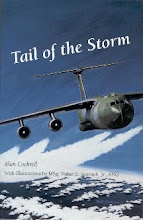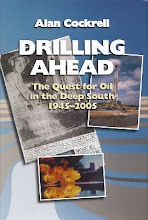I have just signed a contract to publish "Decision Height" under the tentative title, "Faith is the Hunter: A Pilot's Flight Through the Literary Skies of Ernest Gann." I'm excited to be working again with Wordcrafts Press, who published my 2022 novel, "The Restless Earth." Release Date is May 1, 2025.
The new book will be a memoir of my 25 years with United, but it will be a memoir with a new slant on Ernest Gann's "whims of fate." It contains much material from the Decision Height blog as well as new writing. Here is the introduction page:
WHAT THIS IS ABOUT
Pondering the loss of over 100 of his friends and acquaintances to aircraft accidents, best-selling novelist and pioneer airline pilot, Ernest Gann felt compelled to explore the power of “luck,” or the lack of it, in their deaths and in his own life. Ruminating in his 1978 autobiography, A Hostage to Fortune, he wrote, “Luck had obviously been in control, and the exploration of its power became the underlying theme of this [his] book. I called it Fate is the Hunter and had no idea it would become a classic in the aviation world if only because there had never been a similar treatment of the subject.” Nearly 75 years since its first publication, Fate is the Hunter continues to sell and still sits reverently in the most exalted spot on the bookshelves of countless aviators.
Like Gann I struggle with the words luck and fate. They’re untamed, intemperate words that smack of chaos and hopelessness. Yet, as a professional pilot and a Christian, I’m assailed by them again and again. They lurk in the recesses of my consciousness, grinning, nodding, winking at every turn of peril or graciousness that has come my way. “Told ya,” they say. “We’re in charge here. Next time it might go the other way for you.”
Luck and fate are words that are so ingrained in the culture of aviation I can’t shake them. My Bible doesn’t mention luck but speaks of fate as certain physical death for all. The optimists among us say there is a reason for everything—that nothing happens by chance. A very successful businessman once told me luck was hereditary. My high school coach told me a man makes his own luck, which seems to be the prevailing creed.
But if that's so, then what of the two pilots who collided in mid-air? One made it home. One didn’t. Did the one who died not work hard enough to secure his luck? And good luck was visited upon other one due to his hard work? What was the reason? I’m a simple man. These things are for philosophers and theologians. When I try to read them my head swims. I also happen to be the “other one.”
In my 25 years of airline flying, and more in military metal and sport planes, Fate is the Hunter has been my constant companion, and to a lesser extent the works of Richard Bach and Antoine de Saint-Exupéry. I ponder these preeminent writers mostly on the long, quiet, night flights, which are the times in which they did their best thinking and subsequently their best writing. What intrigues me the most about them is their seeming trust in those mystifying words, fate, luck, fortune, and destiny. I’m not sure if Gann and the others have the answers right, or if they have answers at all. But they dare ask the questions. I can only be content to fly in their wake while pondering my own place, fate, and fortune in God’s grand scheme. This account is my journey with them.
As I look back on the years that I was actively posting to Decision Height--and enjoying it much--I now see there was more of a reason for it than my enjoyment. It was the groundwork for the most important writing project I have ever undertaken. I greatly look forward to sharing these new perspectives with my Decision Height followers.
Stay tuned.








.jpg)
.jpg)


